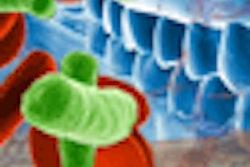Dear Oral Cancer & Diagnostics Insider,
A black raspberry infused mouthwash and an adhesive patch that delivers fenretinide to precancerous oral lesions could deliver a powerful one-two punch in oral cancer therapy, researchers say.
In this latest Insider Exclusive, we talked to a researcher from Ohio State University who helped develop the new treatments, which could change and improve the way oral cancer is currently treated.
In other Oral Cancer & Diagnostics Community news, while U.S. cancer deaths continue to fall, the rates of head and neck cancers, including esophageal and some throat cancers associated with human papillomavirus (HPV), have increased. And thyroid cancer has become the fastest-increasing cancer. Click here to read the American Cancer Society's report and here to read about the possible link between dental treatment and the rise in thyroid cancer.
In a related story, the incidence of oral HPV infection, the principal cause of a form of oropharyngeal squamous cell carcinoma, is increasing in young men in the U.S., researchers say. Read how the HPV vaccination trends of girls could relate to the rise in HPV infections among men.
Meanwhile, radiation therapy with or without chemotherapy is less effective for patients with HIV when compared with the recurrence and survival rates in patients without HIV. Click here to read about a large study of HIV-positive head and neck cancer patients, which found that while treating such patients is difficult, it is becoming more common due to advances in therapies.
And patients treated with intensity-modulated radiation therapy (IMRT) for head and neck cancer reported increasingly better quality of life after treatment than patients receiving other forms of radiotherapy, a study found. Read how patients treated with IMRT fared compared with those who received 3D conformal radiotherapy.
In a related story, researchers say radiation dose can influence the development of apical periodontitis in patients undergoing radiotherapy for cancer. Click here to see why the study's finding should be considered in dental evaluations before the start of radiotherapy.
While radiation therapy is an important part of head and neck cancer therapy, most head and neck tumors have a built-in mechanism that makes them resistant to radiation. Read how a new formulation using gold nanoparticles interferes with the resistance mechanism and increases the efficacy of radiation therapy.
Finally, researchers have found a biomarker in head and neck cancers that can predict whether a patient's tumor will be life-threatening. Click here to see how this discovery could become a component of a new test to guide how aggressively patients with head and neck tumors should be treated.


















